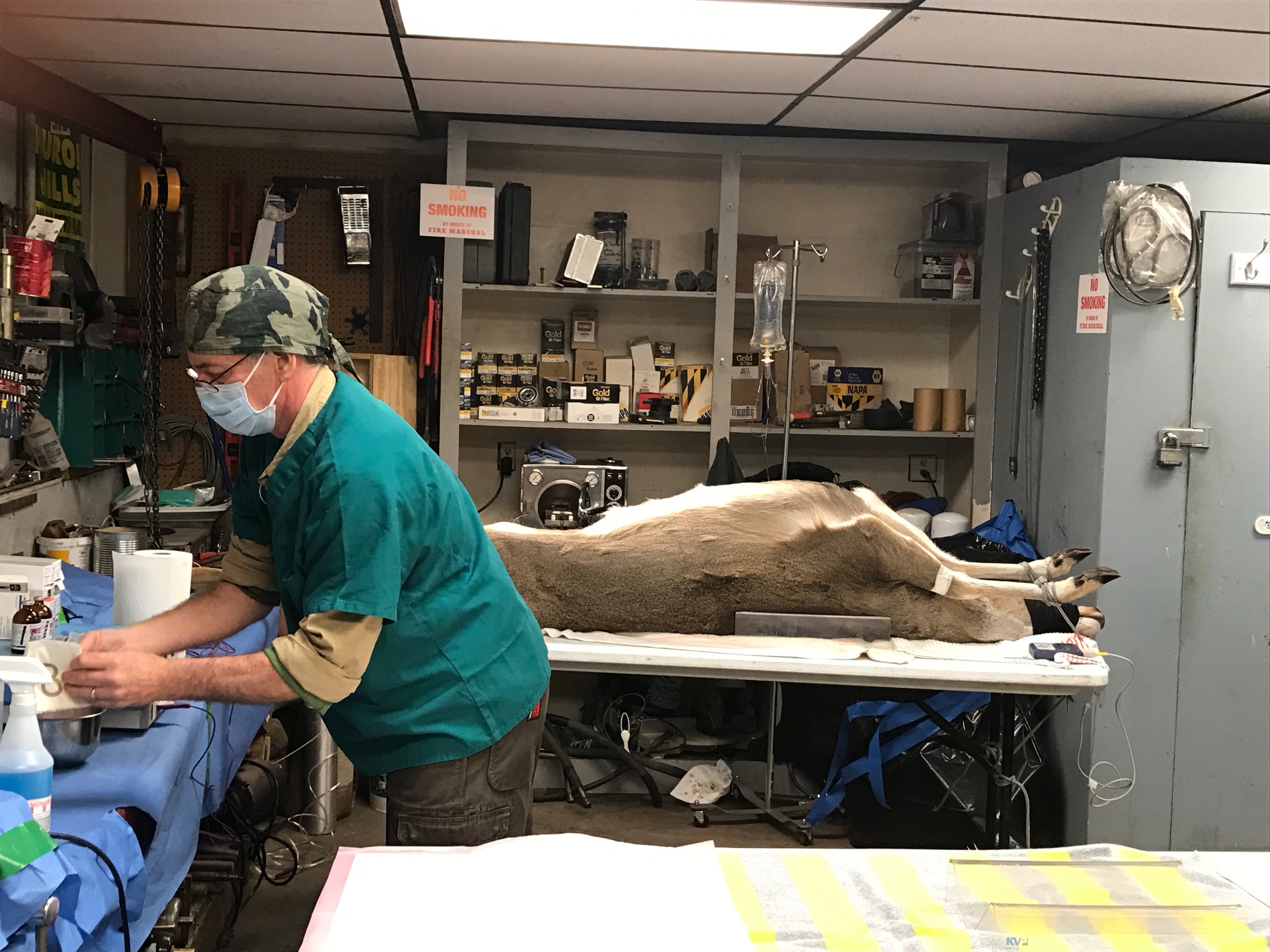
In the world of whitetail population management, the work of Dr. Tony DeNicola falls somewhere between scientific research and anti-hunting ethos.
Dr. DeNicola is founder and president of White Buffalo Inc., a Connecticut-based non-profit that helps urban communities deal with their deer overpopulation problems (whitebuffaloinc.com). One of the most controversial methods White Buffalo uses is to sedate, capture and remove the ovaries of healthy female deer. In December, 2016, the city of Ann Arbor, Mich. received a permit from the Michigan Department of Natural Resources (MDNR) that allows White Buffalo to sterilize up to 80 whitetail does, most of which are pregnant and will miscarry their fetuses three or four days after receiving ovariectomies.
Not surprisingly, many hunters and/or Ann Arbor residents believe the MDNR had no business issuing the permit.
“Our main concern is that allowing this to be done will encourage other communities to immediately reject hunting, specifically urban bowhunting, as a solution to deer overpopulation problems,” explained Ann Arbor resident Drew YoungeDyke, who’s also a deer hunter and chief information officer for the Michigan United Conservation Club (mucc.org), an organization that represents Michigan hunters and anglers.
YoungeDyke and many other Michiganians argue that the MDNR went against its own Deer Management Plan, the Great Lakes State’s blueprint for managing Michigan Whitetails. One key action item found in the plan is to encourage the use of hunting to control urban deer populations. Chad Stewart, a deer and elk program specialist for the MDNR, has an answer.
“We really don’t know how well this sterilization technique will help Ann Arbor manage its deer population,” Stewart said. “If the DNR is to be a credible authority on deer management, we have to maintain objectivity when these techniques are discussed and we have to evaluate them and then make recommendations to communities.”

THE PROCESS
White Buffalo will place radio telemetry collars on a few of the sterilized does and follow their movements for a few months. There’s no way to measure the stress all this puts on deer, nor does there appear to be any comprehensive plan to determine if the sterilization method is effective at halting the growth of whitetail populations.
In fact, the main evaluation criterion the MDNR will be using is to see if any deer die from the capture or surgery. White Buffalo has used the same technique on whitetails in eight other urban areas, including Cincinnati, Ohio, East Hampton, New York, and San Jose, California. DeNicola reports that of the nearly 750 does that have been sterilized, two have died.
Hiring White Buffalo doesn’t come cheap. In 2017 alone the home to the University of Michigan will fork over $98,000 to the company to perform the ovariectomies. An additional $85,000 will be paid to White Buffalo sharpshooters to cull up to 100 Ann Arbor deer.
WHY NOT HUNTING?
Given these exorbitant costs, why not let hunters help the city manage its deer population?
 “I don’t remember a hunting group coming to us and suggesting we use bowhunting to reduce the deer population,” said Tom Crawford, Ann Arbor’s chief financial officer and chairman of its deer management project. “I don’t think it would work though, because a deer could run off and die on a property owned by someone who’s against hunting.”
“I don’t remember a hunting group coming to us and suggesting we use bowhunting to reduce the deer population,” said Tom Crawford, Ann Arbor’s chief financial officer and chairman of its deer management project. “I don’t think it would work though, because a deer could run off and die on a property owned by someone who’s against hunting.”
What Crawford is forgetting is that deer are already dying in Ann Arbor. Deer-vehicle collisions are on the rise, and residents like YoungeDyke believe bowhunting wasn’t given a fair shot.
“I got up and spoke at one of the meetings, and I told them that our organization would help them design an urban bowhunting program like they have in Meridian Township [Mich.],” YoungeDyke said. “One lady stood up and asked what does she say to her child if they find a dead deer in their yard? I told her that you can explain that dying is part of life, and that this deer will be eaten, which is a lot better than rotting somewhere on the side of a road.”
Better – but not something Ann Arbor will try.

